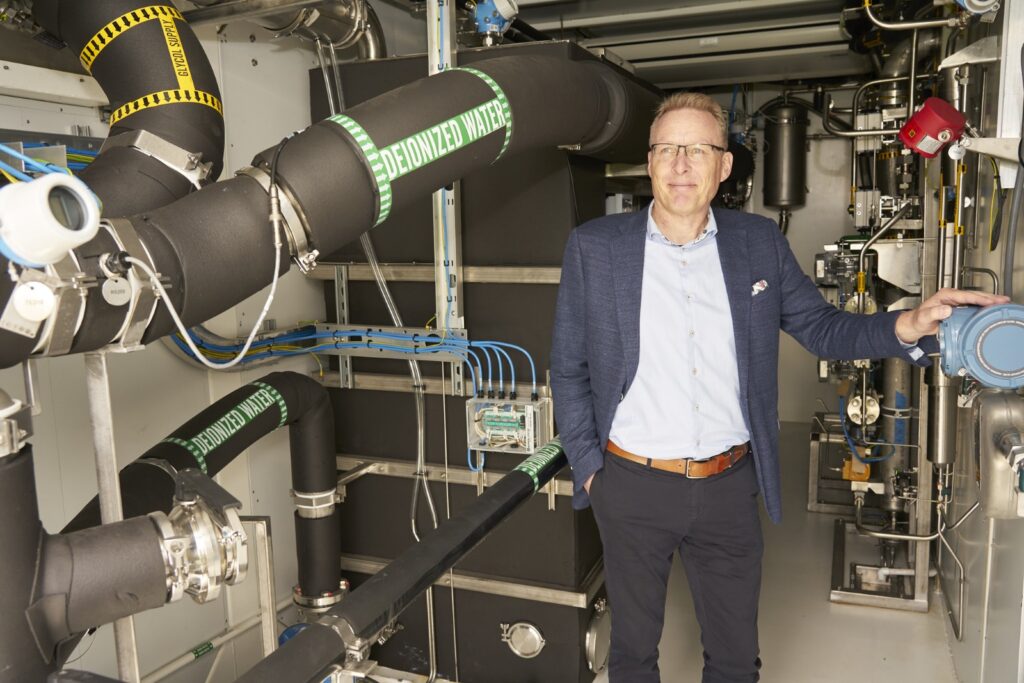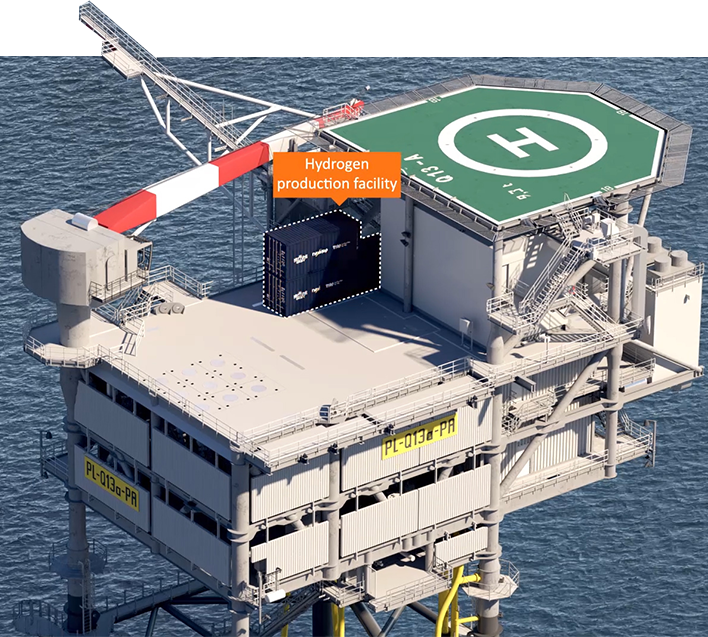During H2 Kenniscafé on Tuesday 20 August we will discuss the production and landing of green hydrogen at sea. Among other things, you will hear everything about the latest status of the PosHYdon project, which aims to produce green hydrogen on an operational gas platform in the Dutch North Sea. David Bartmann (ENI Energy) will already give you a sneak preview.

1 – In May, the onshore test of PosHYdon, which aims to produce green hydrogen on an operational gas platform in the Dutch North Sea, started on the InVesta site. How did this go?
“The online test went according to plan and as desired. In a project involving multiple new parties, it is essential that all parties are present as agreed and perform their assigned tasks. We find it extremely important that the installation works well offshore. That is precisely why we performed the onshore test before we started the offshore installation. This prevents valuable learning moments on location.”
2 – The electrolyser was subjected to thorough testing at Investa. How does such a test work and what should you take into account?
“In this project, we are bringing together components that have not worked together before. Each partner is strong in its own application, but whether this also works well in an integrated system must first be proven. In this case, we first tested each component for its individual functioning and connection with the central control system, before we started the system tests. For example, we tested whether the correct output signals were being given for all input signals. From a safety perspective, this is crucial. The unit must respond adequately to deviations and possible dangerous situations. In the integrated test, we started the unit from the control system and this was successful.”
3 – What challenges await hydrogen production at sea?
“The challenges are basically no different than on land. That means that all components have to work as a unit. Offshore, the conditions are of course different from on land. Think of the intensity of wind and precipitation at sea and the influence of salt water on the equipment. Onshore it always rains vertically, offshore you often have to deal with horizontal rain. So you have to think differently.”
5 – When could large-scale offshore hydrogen production become a reality?
“I expect the first Gigawatt installation around 2030-2035, depending on the investments that are made. But let's focus on this offshore pilot first. With the learning material that this provides for the fifteen partners in the consortium, it will be possible to make future installations better and more cost-efficient.”

H2 knowledge café will be hosted on August 22 at InVesta, the expertise center for gasification technologies in Alkmaar. In May, the onshore test of PosHYdon started on the InVesta site. How did this go and what are the experiences? We will also discuss the landing and transport of green hydrogen. For example, what is the status of the construction of the national transport network for hydrogen? And how important is hydrogen production at sea in relation to the import of hydrogen?
View the full program and register on the WaterstofNHN community. Log in and go to Events, see the button below.